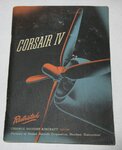Hi mjfur,
Yes the brace (seen inside the artwork above) was eliminated at the same time as the window was replaced by the hatch (c/n 2531 = BuNo 50066); in the drawing in post 7 it's the "V" seen inside the window. Note that it could be removed from earlier aircraft that still had the window, even though there was no requirement to retrofit windows with hatches.
Cheers,
Dana
Yes the brace (seen inside the artwork above) was eliminated at the same time as the window was replaced by the hatch (c/n 2531 = BuNo 50066); in the drawing in post 7 it's the "V" seen inside the window. Note that it could be removed from earlier aircraft that still had the window, even though there was no requirement to retrofit windows with hatches.
Cheers,
Dana

